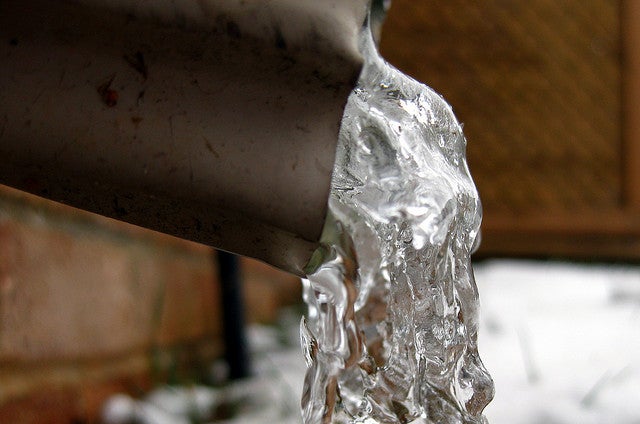NWS: Take necessary action to keep pipes from freezing during Arctic outbreak

(Image: Sterlic via Flickr)
A prolonged cold wave begins Thursday night, so it’s a good time to consider some preventive measures to protect water pipes.
According to the National Weather Service, the region will face intervals of bitterly cold air for about a week.
The current NOAA forecast calls for daytime highs at the Shore well below the freezing mark on Friday, Sunday, and Monday. Overnight lows will be even colder, with single-digits and teens likely. Accounting for gusty winds, it will feel like 10 to 25 degrees below zero during the mornings of Friday, Sunday, and Monday.
With such extreme conditions, experts say that water pipes are vulnerable.
“The threshold temperature for most pipes — those in attics and other areas not directly exposed to the cold — is about 20 degrees,” advises the Houston Chronicle‘s Eric Berger.
Pipes burst due to excessively high pressure. A comprehensive gizmodo.com article on the subject notes:
Water pipes burst because the water inside them expands is it gets close to freezing, and this causes an increase in pressure inside the pipe. When the pressure gets too high for the pipe to contain, it ruptures.
A simple solution is letting faucets run, according to a guide from The Weather Channel. While a dripping faucet is an effective way to relieve water pressure, an open faucet provides “relief from the excessive pressure that builds between the faucet and the ice blockage when freezing occurs. If there is no excessive water pressure, there is no burst pipe, even if the water inside the pipe freezes,” the guide advises.
The Insurance Institute for Business & Home Safety offers more comprehensive tips to mitigate the risk:
Provide a reliable back-up power source, such as a stand by generator, to ensure continuous power to the building.
Recessed light fixtures in the ceiling below the open area that is directly under a roof, such as attic space, should be insulated to prevent the release of heat into the attic.
Insulate all attic penetrations such as partition walls, vents, plumbing stacks, electric and mechanical chases, and access doors that are not properly sealed.
Ensure proper seals on all doors and windows. Depending on the building or room size, fan tests can be conducted to ensure room and pressurization tests.
Seal all wall cracks and penetrations including domestic and fire protection lines, electrical conduit, other utility service line, etc.
Insulation and/or heat trace tape with a reliable power source may be installed on various wet sprinkler system piping. This includes main lines coming up from underground passing through a wall as well as sprinkler branch lines.
A monitored automatic excess flow switch can be placed on the main incoming domestic water line to provide early detection of a broken pipe or valve when the space is unoccupied.
In the event of a frozen or burst pipe, the institute warns:
Don’t use propane or a welding torch to melt the ice on a pipe. Instead, use a hairdryer.
If a pipe has frozen, don’t keep the water flow on.
If a pipe has burst, don’t let it thaw before you repair the pipe.
WHYY is your source for fact-based, in-depth journalism and information. As a nonprofit organization, we rely on financial support from readers like you. Please give today.

